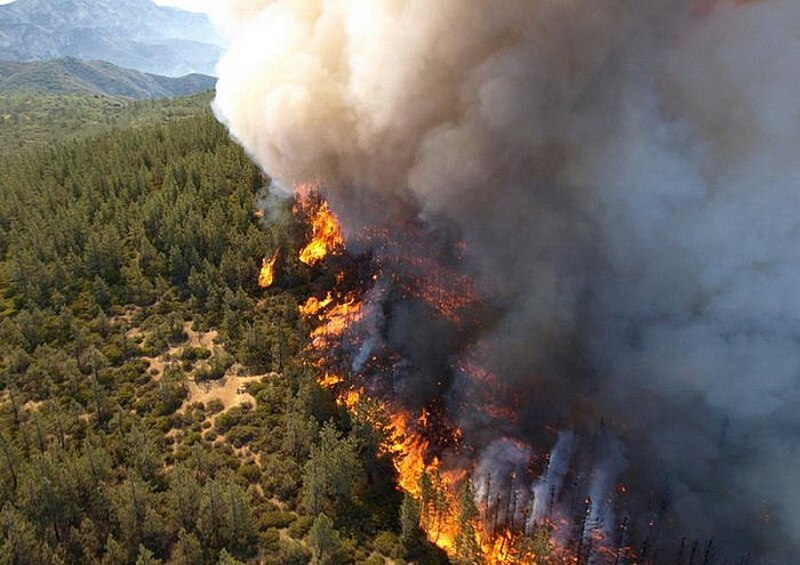
UK researchers are exploring the potential of using swarms of large, twin-engine drones to patrol the skies and stop wildfires before they escalate.
A collaborative effort involving firefighters, scientists, and engineers is underway to develop a system where up to 30 autonomous drones could detect and extinguish fires through collective action powered by artificial intelligence.
Currently, drones piloted by humans are already deployed in firefighting to locate hidden hotspots and assess risks. However, this new research aims to push the boundaries by combining unpiloted drone technology with swarm engineering, marking a pioneering step in wildfire prevention.
The drones intended for future firefighting missions are large, twin-engine aircraft with an impressive wingspan of 9.5 meters (31 feet) and a significant water-carrying capacity. The BBC witnessed a trial at an airfield in Cornwall, where a small-scale swarm, including one of these large drones and two smaller ones, autonomously detected a fire in a bin and simulated extinguishing it. These drones are designed to operate without human intervention, even adapting to changes in flight conditions independently.
The next phase of development, known as swarm engineering, focuses on enabling multiple drones to work together effectively in real-world situations. Professor Sabine Hauert from the University of Bristol, a project partner, explains that the team draws inspiration from the coordinated behaviors of birds, ants, and bees. This approach allows the swarm to perform complex tasks collectively, much like a flock of birds adjusting to environmental changes. Such technology could potentially monitor vast areas, such as the state of California, and respond to fires more swiftly than current methods allow.
The beauty of these swarm algorithms, according to Professor Hauert, lies in their scalability: each drone operates on its own intelligence, meaning additional drones can be seamlessly integrated into the swarm. This adaptability ensures continuous coverage, even when some drones need to refuel.
The twin-engine drones were developed by UK company Windracers, which is also testing these aircraft in Antarctica to support climate change research. Although regulatory approval would be required for real-world deployment, Nickolay Jelev of Windracers emphasizes that the primary goal of the drone swarms is to prevent small fires from becoming uncontrollable infernos. Additionally, the presence of numerous drones patrolling the skies could act as a deterrent to individuals with malicious intent to start fires.
In the UK, wildfires are a significant concern, often ignited by human activities such as barbecues, improperly discarded smoking materials, or intentional fires that grow out of control. The National Fire Chief’s Council (NFCC) notes that climate change is exacerbating this issue, with longer periods of dry, warm weather creating ideal conditions for wildfires. Since 2021, over 1,500 wildfires have been recorded in England and Wales, according to data from National Resilience.
While the prospect of drone swarms preventing wildfires is promising, experts like Professor Stefan Doerr from Swansea University's Centre for Wildfire Research, who is independent of the project, caution that the technology may not yet be fully ready. Questions remain about the effectiveness of the drones, particularly regarding the amount of water or fire retardant they can carry. Professor Doerr believes that while this technology will undoubtedly play a role in future wildfire management, the most effective solutions will likely involve preventative measures, such as better landscape management to reduce the risk of fires becoming severe.
This research marks an exciting step toward a future where technology plays a vital role in safeguarding our environment from the growing threat of wildfires. Photo by Salam2009, Wikimedia commons.




































